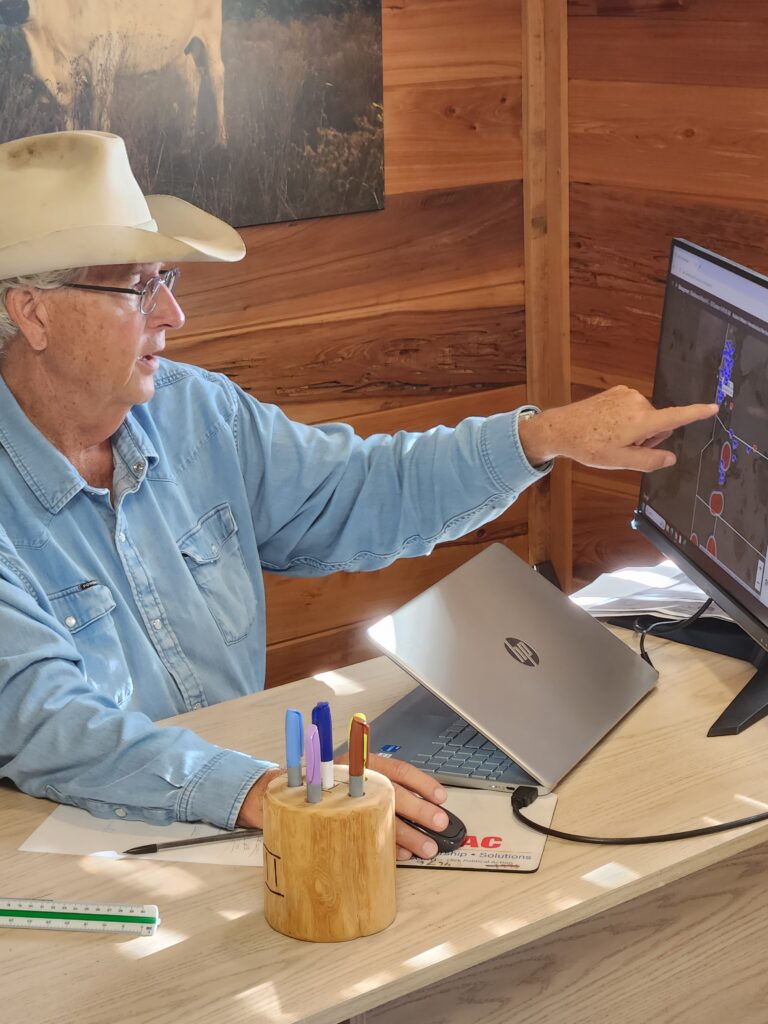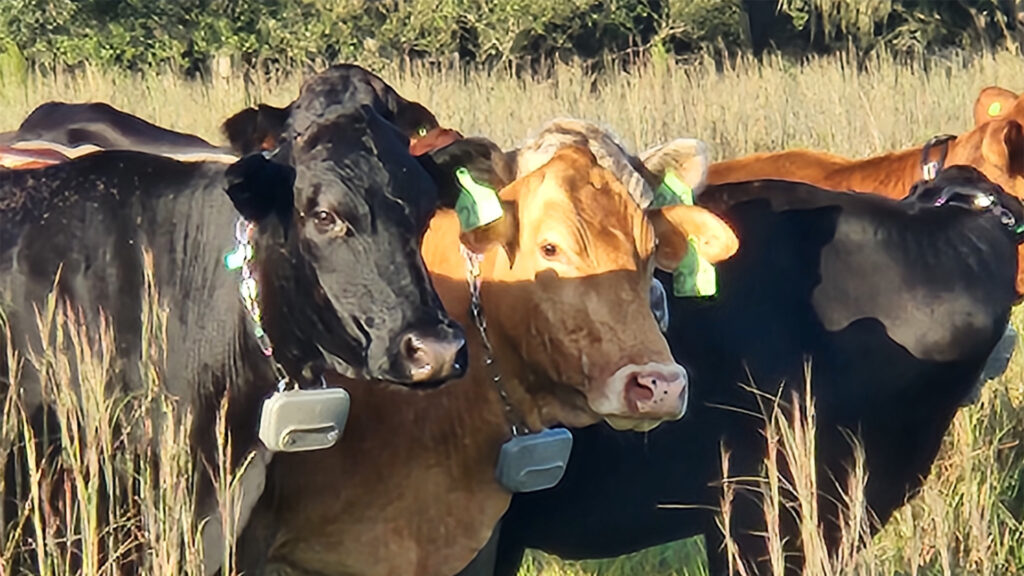By Brad Buck, UF/IFAS Communications
For decades, Jim Strickland has managed and operated Blackbeard’s Ranch in Myakka City. As much as he cares about his cattle, he sees himself as an environmental steward. Strickland, 68, has been in the cattle business since he was a child. He loves the land, and he believes in the value science brings to his ranch.
Those are some reasons he partnered with Joao Vendramini, an agronomy professor at the University of Florida Range Cattle Research and Education Center (REC), on an invisible fence for his ranch– a first-of-its-kind project in the Southeast.
With funding from the Natural Resources Conservation Service (NRCS), a division of the U.S. Department of Agriculture – and some of his own money — Strickland installed cell towers on his property. The NRCS and the Florida Conservation Group are helping UF/IFAS with the project, which includes deferred grazing.

Research projects also include using virtual fencing and excluding cattle from wetland areas during nesting season.
With the project, the towers send signals to collared cattle. Those signals convey a message to cattle to stay within given areas of Strickland’s ranch. The system acts as an invisible fence.
Fencing is a big deal to ranchers. While it’s designed to keep their herds from wandering off, it can stop the flow of wildlife migration, injure cattle if an animal gets tangled up in a fence and is expensive to maintain or replace when damaged. Strickland lost 28 miles of fencing during Hurricane Ian.
Vendramini sees huge advantages to the invisible fence.
“You know where your cows are all the time, and you can change its boundaries any time you want,” he said.
The invisible fence technology gives the producer the flexibility to exclude areas from grazing, as needed, with the touch of a button, Vendramini said.
While Strickland wants to protect his wetlands, wildlife and the environment, he can see using the fence to manage land for water preservation, carbon sequestration and cattle production.
Keeping cattle in check allows Strickland to help protect the Florida Wildlife Corridor, a statewide network of nearly 18 million acres of connected lands and waters supporting wildlife and people.
“With the GPS collars and the tower, you get a system that’s friendlier to wildlife, and you can control your cattle,” Vendramini said. “Wildlife can go through the fences and not even know they’re there.”
How the fence works and the role of AI
The invisible fence technology had been tested in Montana and Idaho, but not in the South. So, Strickland wanted to see whether the technology was practical in Florida.
A private company installed two cell phone towers on 2,500 acres of his 14,000 acres of property as well as GPS collars on about 100 head of Strickland’s cattle. In the first experiment over the summer, 98 cows stayed within their boundaries.

The technology makes ranching more efficient. Through the software, you can set up boundaries where the cattle are allowed to go. You map out your property on a computer.
The tower sends an audio signal to warn cattle that wander off. If that doesn’t work, the cattle get a stimulus – a little reminder that they need to head back to the ranch.
Cell towers and GPS collars are considered artificial intelligence technologies. But there’s more to the AI aspect of this project.
In addition to using towers to give cattle signals, data will be stored in Strickland’s computer. The next step is to bring the technology to the Range Cattle REC in Ona (Hardee County) and experiment with cattle there, Vendramini said.
If he can gather similar data at the REC, he will work with scientists at Oregon State University to develop a model that can predict cattle movement.
Vendramini’s research will exclude several areas from grazing, and he wants to know how that will impact grazing.
Strickland appreciates working with UF/IFAS
Strickland relies on UF/IFAS research for many of his advancements.
“I’ve worked with Joao on a lot of different projects, and looking to the future what we want to do, this just seemed to make sense. With me, science is more believable,” he said. “They relay what works, what doesn’t. Scientists validate us through research. We’ve seen how AI helps farming. I want to see how it helps ranching.”
So far, Strickland likes what he sees in the invisible fence.
“It has exceeded my expectations, but there are a lot of bugs to work out,” he said. “This is the very beginning. It’s kind of like the beginning of the space program. Scientists had successes and glitches along the way, but they kept pushing forward to conduct world-class research that continues to help us in our lives today. We’re at the very tip of the sphere. The possibilities are endless.”
This piece was originally published at https://news.ufl.edu/2023/10/invisible-fence/.
Sign up for The Invading Sea newsletter by visiting here. If you are interested in submitting an opinion piece to The Invading Sea, email Editor Nathan Crabbe at nc*****@*au.edu.



